6 things to know about AI
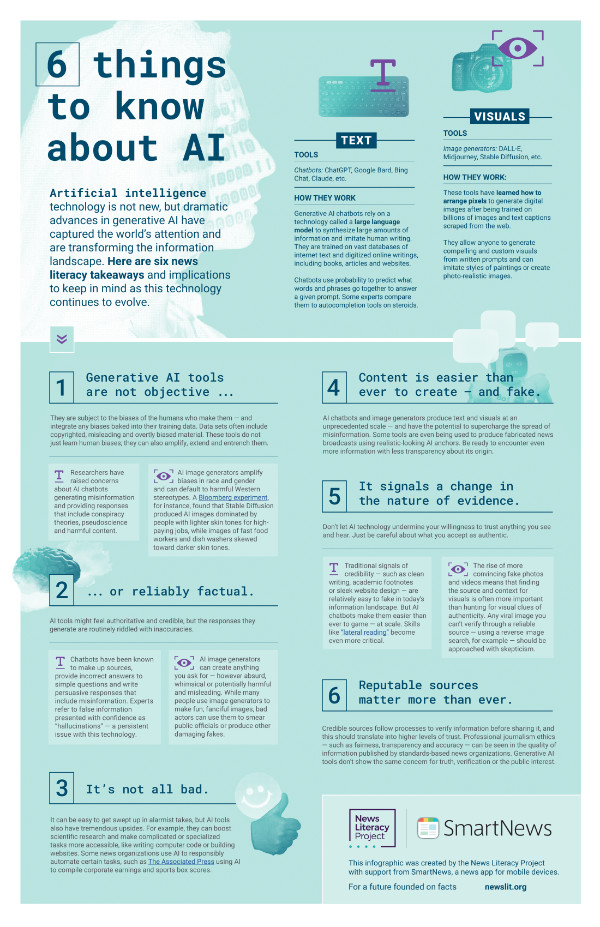
Artificial intelligence technology is not new, but dramatic advances in generative AI have captured the world’s attention and are transforming the information landscape.
This infographic provides an overview of how this technology works and offers six news literacy takeaways to keep in mind as these tools evolve:
- Generative AI tools are not objective: They are subject to the biases of the humans who make them, and any biases in the training data may show up when they are used.
- . . .or reliably factual: AI tools might feel authoritative and credible, but the responses they generate are routinely riddled with inaccuracies.
- It’s not all bad: AI tools also have tremendous upsides. (For example, they can boost scientific research and make complicated or specialized tasks more accessible, like writing computer code or building websites.)
- Content is easier than ever to create — and fake: AI chatbots and image generators produce text and visuals at an unprecedented scale — and have the potential to supercharge the spread of misinformation. Be ready to encounter even more information with less transparency about its origin.
- It signals a change in the nature of evidence: The rise of more convincing photos and videos means that determining the source and context for visuals is often more important than hunting for visual clues of authenticity. Any viral image you can’t verify through a reliable source — using a reverse image search, for example — should be approached with skepticism.
- Reputable sources matter more than ever: Credible sources follow processes to verify information before sharing it, and this should translate into higher levels of trust.
Don’t let AI technology undermine your willingness to trust anything you see and hear. Just be careful about what you accept as authentic.
Listening guide: “Flagrant foul: Misinformation and sports”
Listening guides are designed to support educators in using NLP’s Is that a fact? podcast in the classroom by providing discussion questions, time-stamped episode outlines and classroom activities. Is that a fact? informs listeners about news literacy issues that affect their lives through informative conversations with experts working to combat misinformation. To listen to episodes, read episode descriptions, explore related links or view transcripts, please visit newslit.org/podcast/.
In Season 3 Episode 3 “Flagrant foul: Misinformation and sports” guest host Jake Lloyd digs into how misinformation manifests in the sports world with author and journalist Jemele Hill, a contributing writer for The Atlantic and host of the Spotify podcast Jemele Hill is Unbothered. Hill discusses not only how sports falsehoods spread, but also how the nature of sports reporting makes it more resistant to manipulation than news coverage.
Fact-Checker
In this lesson, students review examples of misinformation, identify a rumor pattern and create a list of red flags to watch out for. Then students will create a social media post warning others to be on the lookout for this type of misinformation and directing them to credible sources about the subject. Finally, students will discuss the impact of misinformation on a democratic society.
Intended for grades 3 and up, this lesson plan includes everything educators need to lead the lesson: essential questions, electronic materials, vocabulary, procedural directions, ideas for differentiation, checks for understanding, examples, an evaluation rubric, and ideas for an extension opportunity. Depending on the classroom, it could take between 30-60 minutes, or be broken up over a few class periods. At the News Literacy Project, we recognize educators are professionals and best understand the needs of their classroom. As such, we expect educators to take and adapt our resources, including this lesson plan, as they see fit.
Below is a preview of some of the elements in the lesson plan:
NLP standard 4: Students demonstrate increased critical habits of mind, including effective verification skills and the ability to detect misinformation and faulty evidence.
Essential Questions
- What are some different types of misinformation?
- What does it look like to be a responsible and news-literate participant in a democracy?
- If I see misinformation, how should I respond?
- How can misinformation and false beliefs undermine an individual’s participation in a democracy and threaten the political process?
- Can misinformation that other people believe still affect those who aren’t fooled by it?
Vocabulary
- Misinformation: Information that is misleading, erroneous or false. While misinformation is sometimes created and shared intentionally, it is often created unintentionally or as humor (for example, satire) and later mistaken as a serious claim by others.
- Viral rumor: An unsubstantiated claim that spreads widely on social media and elsewhere online. Viral rumors often use deceptive techniques (such as out-of-context or doctored images) to stir up strong emotions and amplify false or misleading ideas.
News Goggles: Karena Phan, The Associated Press
Standards-based news organizations care about getting the facts right. When false claims spread online, journalists and fact-checkers often step in to investigate and share their findings to help set the record straight.
This week, we talk to Karena Phan, a reporter for the news verification team at The Associated Press. Phan discusses the steps she takes to find and debunk misinformation trending online. We examine Phan’s recent fact check on a viral video falsely claiming to show the world’s tallest tree and explore how simple tools — such as a Google search or a reverse image search — can go a long way in separating fact from falsehood. Ready to fact-check like a pro? Grab your news goggles!
Note: Look for this newsletter feature the first Monday of the month. You can explore previous News Goggles videos, annotations and activities in NLP’s Resource Library under “Classroom Activities.”
Resources:
- “Misinformation” (NLP’s Checkology® virtual classroom).
- “MisinfoChallenge: Fact-checking 101” (Checkology virtual classroom).
- Infographic: “Eight tips to Google like a pro” (NLP’s Resource Library).
Dig Deeper: Use this viewing guide for the featured News Goggles video to help students take notes on how to think like a fact-checker and verify information online.
News Goggles annotations and activities provide news literacy takeaways on timely topics. These resources feature examples of actual news coverage, including full news reports, headlines, breaking news alerts or excerpts.
This video originally appeared in the March 6, 2023, issue of The Sift® newsletter for educators, which explores timely examples of misinformation, addresses journalism and press freedom topics and examines social media trends and issues. Read archives of the newsletter and subscribe here. Stock music in this video was provided by SoundKit from Pond5.
Have feedback about this resource? Or an idea for a future News Goggles? Please share it with us at [email protected].
PitchIt! Student essay contest
PitchIt! Student essay contests happening in Colorado, Florida, New York, Pennsylvania and Texas
Grades: 6-8, 9-12
About
Student voices are catalysts for positive change in schools and communities. You can empower them to be well-informed and civically engaged when you participate in the News Literacy Project’s PitchIt! contest.
This is an authentic way to get middle and high school students to learn about and express their thoughts about current events from a news literacy perspective. In addition to exploring an issue important to them, they can help combat misinformation or work to protect freedom of the press.
To have your students participate in PitchIt! and get the most out of it, use NLP’s free resources and curriculum guides. You choose the top essays from your class to submit for judging and prizes.
Click here for a printable, one-page guide to participating in PitchIt!
It is the ideal time to start using Checkology® and other free resources to prep your students. You can also email your questions to [email protected] for more information.
- Pennsylvania deadline, March 1, 2024: Click here for details.
- Colorado deadline, April 15, 2024: Click here for details.
- Florida deadline, May 24, 2024. Click here for details.
- New York deadline, April 19, 2024: Click here for details.
- Texas deadline, April 26, 2024: Click here for details.
Not in one of these regions? NLP encourages you to contact your local news literacy ambassador or our staff ([email protected]) and adapt our contest rules to create a contest for your learning community.
Curious to what participating teachers had to say?
“PitchIt! utilizes news literacy curriculum to broaden the understanding of how media influences all of us every day. Students then analyze and learn for themselves the power of using information with and without bias. I highly recommend facilitating part or all of the curriculum in classrooms across the board in Social Studies, English, Science, and more. It shows students that language, facts, and biases impact us comprehensively.”
— Renee A. Cantave, iWrite magnet educator, Arthur and Polly Mays Conservatory of the Arts, Miami, Florida
“PitchIt! was a great experience for my students. Not only did it raise awareness among them regarding the importance of good writing and of an important current issue in our community, the culminating event gave contest winners a chance to verbally express their positions, while receiving important feedback.”
— Rolando Alvarez, Coral Way K-8 Center, Miami, Florida
Tired of feeling like you’re working in a vacuum? Sign up for NewsLitNation and our private NewsLitNation Facebook Group to connect and share with other educators across the country passionate about news and media literacy. As a member of NewsLitNation® you’ll receive special perks and the NewsLitNation Insider, our monthly newsletter that keeps you up to date about all things news literacy!
Evaluate credibility using the RumorGuard 5 Factors
Don’t get caught off guard. Recognize misinformation and stop it in its tracks by using RumorGuard’s 5 Factors for evaluating credibility of news and other information. This classroom poster displays the 5 Factors alongside “Knows” and “Dos” for evaluating credibility.
Learn about RumorGuard | Go to RumorGuard | The 5 Factors on RumorGuard
The 5 Factors
- Authenticity. Is it authentic?
The digital age has made creating, sharing and accessing information easier than ever before, but it’s also made it easier to manipulate and fabricate everything from social media posts to photos, videos and screenshots. The ability to determine whether something you see online is genuine, or has been doctored or fabricated, is a fundamental fact-checking skill.
- Source. Has it been posted or confirmed by a credible source?
Not all sources of information are created equal, but it can be easy to glaze over the significant differences while scrolling through feeds online. Standards-based news organizations have guidelines to ensure accuracy, fairness, transparency and accountability. While these sources aren’t perfect, they’re far more credible and reliable than sources that have no such standards. Viral rumors that confirm one’s perspectives and beliefs or that repeatedly appear in social media feeds can feel true, but if no credible source of information has confirmed a given claim it’s best to stay skeptical.
- Evidence. Is there evidence that proves the claim?
Misinformation lacks sound evidence by its very nature — but it often tricks people into either overlooking that fact or into accepting faulty evidence. Many false claims are sheer assertions and lack any pretense of evidence, while others present digital fakes and out-of-context elements for support. Evaluating the strength of evidence for a claim is a key fact-checking skill.
- Context. Is the context accurate?
Tricks of context are one of the most common tactics used to spread misinformation online. Authentic content — such as quotes, photos, videos, data and even news reports — is generally easy to remove from its original context and place into a new, false context. For example, an aerial photo of a sports championship parade from 2016 can easily be copied and reposted alongside a claim that it depicts a political protest that took place yesterday. In this false context, the photo may easily be perceived as genuine by unsuspecting people online. Luckily, there are easy-to-use tools that can verify the original context of most digital content.
- Reasoning. Is it based on solid reasoning?
Misinformation is often designed to exploit our cognitive biases and vulnerability to logical fallacies. These blind spots in our rational thinking can make baseless conclusions feel plausible or even undeniable — particularly when they reinforce one’s beliefs, attitudes and values. Conspiracy theorists, pseudoscience wellness influencers and propagandists commonly rely on flawed reasoning to hold their assertions together. Learning to logic-check claims is an important element in verifying information.
Know and do
Know:
• Standards of quality journalism
• Types of misinformation
• How cognitive biases work
• What makes evidence credible
Do:
• Reverse image search
• Lateral reading
• Critical observation
• Search internet archives
• Practice healthy skepticism
Three types of election rumors to avoid
Elections are the lifeblood of democracy, but political campaigns are often rancorous, controversial and polarizing events. As if the misleading claims and attack ads weren’t challenging enough for the public, bad actors further muddy the waters by pushing disinformation into our social media feeds.
These harmful falsehoods are designed to cause confusion and to undermine people’s faith in American democracy. Election disinformation can be tricky, but the same false narratives and claims tend to get recycled, which can make it easier to spot.
This infographic outlines three common types of election disinformation that are likely to circulate on social media during election cycles in the United States. It also includes tools and tips for locating credible information in your state or district.
Being familiar with recurring election disinformation themes can help inoculate you against the allure of new incarnations and iterations that occur regularly. It can also help you more efficiently debunk them and warn your friends and family members not to get taken in.
The three types of election disinformation this infographic focuses on are:
- “Ballot mule” accusations: A substantial portion of election misinformation revolves around baseless claims of voter fraud. Accusations of people (“mules”) illegally gathering large numbers of fraudulent ballots and delivering them to ballot drop boxes have become particularly common, despite the fact that such allegations lack evidence. More often, people who are authorized to return multiple ballots — such as designated agents for nursing home residents — are incorrectly portrayed as engaging in schemes to swing elections. Be wary of photos and videos of people delivering ballots that are framed as “evidence” of this type of fraud, which is extremely rare.
- Mail-in ballot rumors: Voting by mail is increasingly popular, but people are vulnerable to believing baseless allegations of mishandling ballots, partly because the chain of custody is less direct than with in-person voting. But mail-in voting is no less secure than in-person voting and examples of fraud remain rare (usually involving someone attempting to return a mail-in ballot previously requested by a since-deceased relative or housemate). If you see a claim about fraudulent mail-in voting, be extremely cautious and take time to verify it at least one credible source.
- Poll worker rumors: The increase in livestreams of election workers doing their jobs has given lots of raw fodder to strong partisans looking for anything they can construe as fraud. Keep in mind that there is legitimate and necessary election work that ordinary people are unfamiliar with and don’t entirely understand. Watch out for video clips and images out of context claiming that poll workers are manipulating the vote.
Don’t forget to check out the resources linked throughout the infographic, including ballot trackers, studies of actual fraud (which, again, is extremely rare) and analyses of viral election misinformation.
News Lit Quiz: Should you share it? Education edition
News Goggles: Seana Davis, Reuters
News Goggles annotations and activities provide news literacy takeaways on timely topics. These resources feature examples of actual news coverage, including full news reports, headlines, breaking news alerts or excerpts.
This video originally appeared in the March 7, 2022, issue of The Sift® newsletter for educators, which explores timely examples of misinformation, addresses journalism and press freedom topics and examines social media trends and issues. Read archives of the newsletter and subscribe here. Stock music in this video was provided by SoundKit from Pond5.
Misinformation thrives during major news events and can spread rapidly on social media by tapping into people’s beliefs and values to provoke an emotional reaction. Pushing back against falsehoods in today’s information environment is no small task, but a few simple tools can go a long way in the fight for facts. This week, we talk to Seana Davis, a journalist with the Reuters Fact Check team, about her work monitoring, detecting and debunking false claims online.
Misinformation often stems from “a grain of truth,” Davis said. “So it’s all about trying to weed out what is true and what is not.”
Davis sheds light on some common ways that viral falsehoods spread — including through miscaptioned videos and digitally altered headlines — and demonstrates how to fact-check false claims like a pro, using digital verification techniques such as reverse image search and advanced searches on social media. Grab your news goggles!
Resources:
- “Misinformation” (NLP’s Checkology® virtual classroom)
- Reverse image search tutorial (Checkology virtual classroom)
- Infographic: “Eight tips to Google like a pro” (NLP’s Resource Library)
- Expert mission: “Can you search like a pro?” (Checkology virtual classroom).
Dig deeper: Use this viewing guide for the featured News Goggles video to help students examine how to recognize and debunk some common types of misinformation online.
Have feedback about this resource? Or an idea for a future News Goggles? Please share it with us at [email protected].
In brief: Misinformation
Few problems with our information environment are more pressing or prominent than the proliferation of misinformation online. False and misleading content is often designed to target our emotions and use our biases against us, exploiting our most deeply held beliefs and values to bypass our critical, rational thought processes.
But thinking and learning about misinformation can be challenging. Partisans lob strategic accusations of “fake news” at ideas they disagree with, or at news coverage they want to discredit. Social media platforms that have policies against misinformation fail to enforce them in ways that are consistent and effective. Bad actors who create and purposefully amplify disinformation do so for a variety of reasons, including political or financial gain or to simply to cause confusion and social division. They also employ an array of disinformation tactics and cover their tracks in clever ways.
This infographic is designed to help you get your bearings in the misinformation landscape. Why do people share misinformation? What is the difference between misinformation and disinformation? What are some of the different types of misinformation people regularly encounter online? What are some “red flag” phrases and other signs of dubious content that can help people recognize when to remain skeptical and proceed with caution.
It’s important to keep in mind that academic research into mis- and disinformation is ongoing, and our understanding of people’s information habits — including why they might be vulnerable to false and misleading content and motivated to share it — is improving over time.
Misinformation itself is also always changing, attaching itself to current events and controversial issues that gain prominence in the news cycle or national conversation. However, many of the strategies of misinformation — including placing photos, videos and quotes in false contexts, and doctoring or manipulating content — remain the same and can become recognizable with practice.
This infographic is designed to provide a foundational understanding of this urgent problem and help people be more mindful about their information habits.
Fact-check it!
In this classroom activity, students join an “expert” group to learn one specific digital verification skill, then reorganize and join a “jigsaw” group to share what they learned with their classmates and to fact-check and analyze one example (or more) of viral rumors.
“Jigsaw” groups will work as a team to answer a series of questions about the authenticity and origins of visual examples (photos and videos) and the accuracy of any claims made (in an accompanying social media post or meme, for instance). Then, students extend their skills to explore each example further.
Each group will learn about five digital verification skills and consider how these skills can help them be more digitally savvy online as they work together to investigative a viral rumor. These verification skills include:
- Critical observation
- Reverse image search
- Geolocation
- “Lateral reading”
Students can review these skills by watching video tutorials available in the Check Center through the News Literacy Project’s free Checkology® virtual classroom.
This news literacy activity is suggested for grades 7-9 and 10-12+. It also makes the following essential questions available for exploration:
- What different types of misinformation exist?
- Why do people believe misinformation?
- What skills and tools do people need to effectively debunk misinformation?
The activity can help students apply what they have learned in the “Misinformation” lesson on Checkology. In this foundational lesson, misinformation expert Claire Wardle of First Draft — a disinformation research organization — examines five common types of misinformation. Students gain a new vocabulary to distinguish between different kinds of false content online.
About classroom activities:
NLP’s activity plans are designed to be “evergreen” news literacy resources that help educators introduce and reinforce specific news literacy skills and concepts. They are often best used as follow-up and extension activities from specific NLP lessons, either in the resource library or on Checkology.
How to speak up without starting a showdown
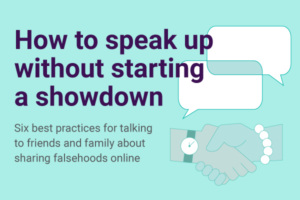 Misinformation is always problematic, but when it appears alongside pet photos and family updates on social media, it can be especially frustrating and unwelcome. It’s one thing if a stranger spreads falsehoods online. But what should we do when we see misinformation shared by family and friends?
Misinformation is always problematic, but when it appears alongside pet photos and family updates on social media, it can be especially frustrating and unwelcome. It’s one thing if a stranger spreads falsehoods online. But what should we do when we see misinformation shared by family and friends?
Stepping into the role of fact-checker when it comes to loved ones can be tricky and stir strong emotions, so it’s worth preparing for — especially as more falsehoods seep across social media and into family and friend group chats.
While every scenario is different, following some general best practices can help keep the conversation civil and make the interaction worthwhile. Use these six tips — with some helpful phrases for getting started — as a guide on how to speak up without starting a showdown. It may not be easy, but talking to loved ones about false or misleading content can help them think twice about what to share in the future.
“TRUST ME” discussion guide on manipulation and misinformation (collegiate guide)
 About the film
About the film
Misinformation is all around us, and it has real-world consequences. In today’s information landscape where anyone can publish almost anything, who — and what — can you trust?
“TRUST ME” is a feature-length documentary directed by Oscar-nominated Roko Belic that delves into the topics of manipulation and misinformation by exploring human nature, information technology, and the need for news and media literacy to help people trust one another. The film was produced by the Getting Better Foundation, whose mission is to build trust using the truth. For additional information about the film or its producers, or to get involved, go to the film’s website.
The film is available for purchase from New Day Films: “TRUST ME“.
About this guide
This guide was produced by the News Literacy Project (NLP) and Pamela Brunskill with support from the John S. and James L. Knight Foundation.
The guide is intended for adult learners in all settings, such as colleges, correctional facilities and community forums. Leaders should adapt, adopt and adjust these recommendations and ideas as they see fit.
The discussions we recommend are broken up into three sections: before viewing, during viewing and after viewing to help you establish, and build on, the core concepts in the film and reflect on the questions that result. Extension and further reading opportunities are listed at the end of the guide.
“TRUST ME” classroom guide: A unit on manipulation and misinformation
 About the film
About the film
Misinformation and disinformation are all around us, and have real-world consequences. In today’s information landscape where anyone can publish almost anything, who — and what — can you trust?
“TRUST ME” is a feature-length documentary that delves into the topics of manipulation and misinformation by exploring human nature, information technology, and the need for news and media literacy to help people trust one another. The film was produced by the Getting Better Foundation, whose mission is to build trust using the truth. For additional information about the film or its producers, or to get involved, visit TRUSTMEdocumentary.com and GettingBetterFoundation.org. The film is available for purchase from New Day Films.
The education cut of the film that accompanies this guide includes 15 segments. Depending on your schedule and objectives, you can show the full documentary or share it in segments.
About this guide
This guide was produced by the News Literacy Project (NLP) and Pamela Brunskill with support from the John S. and James L. Knight Foundation, which also funded the distribution of the education cut of the film.
The guide is intended for students in grades 4-6, 7-9, and 10-12+. The lessons are delineated for a particular grade band when appropriate and are designed for teachers to adapt, adopt, and adjust as they see fit.
The lessons are broken up into three sections: before viewing, during viewing and after viewing to allow for scaffolded development of concepts and understanding. Extension and further reading opportunities are listed throughout each of these sections.
“TRUST ME” discussion guide on manipulation and misinformation (for parents and caregivers)
 About the film
About the film
Misinformation is all around us, and it has real-world consequences. In today’s information landscape where anyone can publish almost anything, who — and what — can you trust?
“TRUST ME” is a feature-length documentary directed by Oscar-nominated Roko Belic that delves into the topics of manipulation and misinformation by exploring human nature, information technology, and the need for news and media literacy to help people trust one another. The film was produced by the Getting Better Foundation, whose mission is to build trust using the truth. For additional information about the film or its producers, or to get involved, go to the film’s website.
The film is available for purchase from New Day Films: “TRUST ME“.
About this guide
This guide was produced by the News Literacy Project (NLP) and Pamela Brunskill with support from the John S. and James L. Knight Foundation.
The guide is intended for parents and caregivers to aid in discussing the film with their families or other caregivers. They should adapt, adopt, and adjust these recommendations and ideas as they see fit.
The discussions we recommend are broken up into three sections: before viewing, during viewing and after viewing to help you establish, and build on, the core concepts in the film and reflect on the questions that result. Extension and further reading opportunities are listed at the end of the guide.
Fighting falsehoods on social media
The quiz embedded below measures how you know social media platforms’ policies designed to stem falsehoods from flooding your newsfeed. Different tech companies take different approaches, with some being more vigilant than others. In addition to implementing and enforcing their own policies, some platforms allow you to report misleading posts or provide information about the people and/or organizations that manage the page, including where they are located, when the page was created, whether the page has had other names, and whether it is running ads?
More important than ever
We have seen just how important such policies and tools are in 2020, with plenty of misinformation circulating about COVID-19, racial justice protests, wildfires and the presidential election.
For example, when you search “coronavirus” or “COVID-19” on certain platforms —you’ll learn which ones in the quiz — post from authoritative health sources or standards-based news organizations are prioritized at the top of the results. One social media platform has a “medical misinformation” option in its content reporting menu, and others are expected to follow suit.
Different approaches to political advertising
Falsehoods, rumors and manipulated content about elections, campaigns and politicians are nothing new, and some companies are working to keep such misleading content off their platforms. And one tech company banned political ads last fall, arguing that the reach of political messages should not be bought through internet advertising. But another online giant has taken a lenient approach to political advertising. Its policy has exempted politicians’ posts and ads from the company’s third-party fact-checking program because they are considered “newsworthy” even if they are untrue.
So take this quiz and see how much you know about the social media sites that you visit and the measures they are taking to protect the public. You might be surprised by how much you know or don’t know!
Five types of misinformation
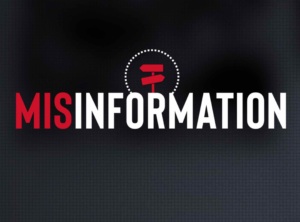 The term “fake news” once referred to misinformation designed to look like legitimate news, but the term has been rendered meaningless and counterproductive through overuse and political weaponization. The reality is that different kinds of misinformation vary significantly in their tactics, intent and impact. Therefore, to better understand misinformation, we need a new vocabulary that helps us see and think about these differences.
The term “fake news” once referred to misinformation designed to look like legitimate news, but the term has been rendered meaningless and counterproductive through overuse and political weaponization. The reality is that different kinds of misinformation vary significantly in their tactics, intent and impact. Therefore, to better understand misinformation, we need a new vocabulary that helps us see and think about these differences.
The poster linked below identifies and defines five types of misinformation:
- Satire
- False context
- Impostor content
- Manipulated content
- Fabricated content
Definitions and examples of each type of misinformation are included in the poster linked below. This poster was adapted from the “Misinformation” lesson on our Checkology® virtual classroom. Use it with that lesson or on its own.
Sanitize before you share
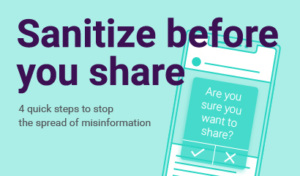 Misinformation swirling around the COVID-19 pandemic underscores the importance of consuming and sharing online content with care.
Misinformation swirling around the COVID-19 pandemic underscores the importance of consuming and sharing online content with care.
Public health officials are urging us to practice good hygiene to help stop the spread of this virus — by washing our hands thoroughly and frequently, staying home as much as possible, and keeping a safe distance from others when we do go out.
We can also practice good information hygiene.
Just adopt the four quick and easy steps below to help stop the spread of COVID-19 misinformation. If we sanitize the process around our information habits, we can prevent misleading and false content — some of which is hazardous to our health — from being widely shared and potentially doing harm.
Get smart about COVID-19
Each of us needs to play a role in combating misinformation about the ongoing COVID-19 pandemic. When the outbreak hit the U.S. in spring, NLP created resources to provide the public, educators and students with accurate information about the illness.
We also created a quiz to test whether you can sort fact from fiction related to COVID-19 information. The World Health Organization called this deluge of information and misinformation about the pandemic an “infodemic’ for good reason.
Test your knowledge
The quiz embedded below will test your ability to accurately categorize information using a compilation of examples pulled from several sources. You will see news clips, social media posts, images, video, and charts and graphics. Then you must determine whether the content is opinion or news, is supported by valid evidence or whether the source cited is reliable.
If you have been paying attention to news about the pandemic these many months, you might find that some of the examples are easy. Yet others just might trip you up. Remember, this virus poses an ongoing and serious public health challenge. Since it appears COVID-19 will be with us for a while, it’s important to keep your skills sharp when it comes to determining what to trust, share or act on.
Your health and the health of your friends and family might just depend on it.
Should you share it?
When a news event or a significant issue grabs hold of the public’s attention, it’s human nature for us to want to get our hands on as much information as we can as fast as we can. It’s also human nature to act on an impulse to share that information with friends, family and the wider community in an effort to keep people safe from harm.
Unfortunately, large breaking news events — especially those connected to controversial, frightening and complex subjects, like the current COVID-19 pandemic — tend to generate a spike in viral rumors. These stories, anecdotes, ads and memes pass quickly from one person to the next, often with little regard to whether the content is true. Some elements may be accurate, but much is simply a form of digital rumor — half-truths, doctored videos and images, or complete fabrications.
Check your emotions and think critically
They typically appeal to our emotions, provoking anger, fear, curiosity or hope and overriding our rational minds and critical-thinking skills. When we have an immediate strong response to a piece of content online, our impulse is to take action: to “like” it, to share it immediately, to express whatever we’re feeling about it. Because of that impulse, and because Twitter, Facebook, Instagram, YouTube and other platforms effortlessly connect us to thousands of people (many of whom we’ve never even met), this content spreads rapidly across social media — even from one platform to another.
So think of these rumors like an actual virus. Mike Baker, a New York Times reporter in Seattle, has been tweeting weekly about the exponential increase in confirmed COVID-19 cases in the United States. A “like,” share or retweet of false or unverified content on social media spreads the same way — and the numbers are considerably larger.

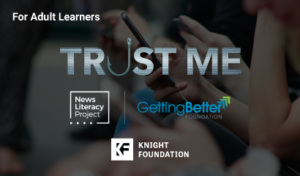 About the film
About the film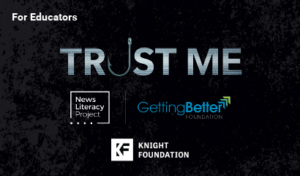 About the film
About the film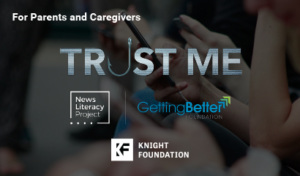 About the film
About the film